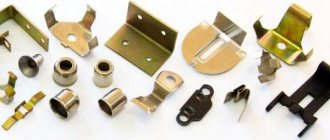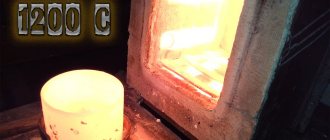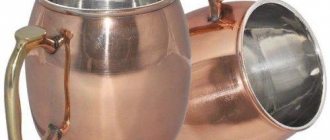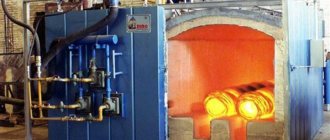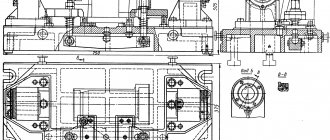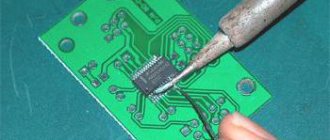Aluminum corrosion is the destruction of metal under the influence of the environment.
For the reaction Al3+ +3e → Al, the standard electrode potential of aluminum is -1.66 V.
The melting point of aluminum is 660 °C.
The density of aluminum is 2.6989 g/cm3 (under normal conditions).
Aluminum, although an active metal, has fairly good corrosion properties. This can be explained by the ability to passivate in many aggressive environments.
The corrosion resistance of aluminum depends on many factors: the purity of the metal, the corrosive environment, the concentration of aggressive impurities in the environment, temperature, etc. The pH of solutions has a strong influence. Aluminum oxide forms on the metal surface only in the pH range from 3 to 9!
The corrosion resistance of Al is greatly influenced by its purity. For the manufacture of chemical units and equipment, only high-purity metal (without impurities), for example, AB1 and AB2 aluminum, is used.
Corrosion of aluminum is not observed only in those environments where a protective oxide film is formed on the surface of the metal.
When heated, aluminum can react with some non-metals:
2Al + N2 → 2AlN – interaction of aluminum and nitrogen with the formation of aluminum nitride;
4Al + 3С → Al4С3 – reaction of interaction of aluminum with carbon with the formation of aluminum carbide;
2Al + 3S → Al2S3 – interaction of aluminum and sulfur with the formation of aluminum sulfide.
Types of corrosion
Aluminum oxidizes quickly in the atmosphere, but to a shallow depth. This is prevented by a protective oxide film. Oxidation accelerates above the melting point of aluminum. If the integrity of the oxide film is compromised, aluminum begins to corrode. The reasons for the thinning of its protective layer can be various factors, from exposure to acids, alkalis and ending with mechanical damage.
Aluminum corrosion is the self-destruction of metal under the influence of the environment. According to the flow mechanism, they are distinguished:
- Chemical corrosion - occurs in a gas environment without the participation of water.
- Electrochemical corrosion – occurs in humid environments.
- Gas destruction - but accompanies heating and hot processing of aluminum. As a result of the interaction of oxygen with metals, a dense oxide film appears. This is why aluminum does not rust, like all non-ferrous metals.
On video: electrochemical corrosion of metals and methods of protection.
Physical and chemical parameters of the element
Aluminum is a chemical element with atomic number 13 and is a silvery-white metal. Its name comes from the Latin word alumen - alum. In almost all compounds, the chemical element exhibits a valence of 3.
- Crystallization of a chemical element occurs in a face-centered cubic lattice. The metal can oxidize at room temperature. At the same time, its surface is covered with a thin oxide film, which performs a protective function.
- The melting point of chemically pure aluminum is 660 °C, boiling point is 2450 °C. The density of the metal under normal conditions is 2.6989 g/cm3.
- In air, aluminum oxidizes to form a thin film, which prevents further reaction with the metal. This protective compound is formed by placing aluminum in a nitric acid concentrate.
- The metal actively interacts with hydrochloric acid. When reacting with alkalis, the protective oxidized layer is first destroyed, and then a reaction occurs with the formation of sodium and potassium aluminates (depending on the type of alkaline compound).
- When heated, the chemical element reacts with bromine and chlorine. When interacting with sulfur, aluminum sulfide is formed, which easily dissolves in water. The metal reacts with hydrogen indirectly through the artificial synthesis of organic compounds. As a result, a powerful reducing agent is formed - polymer aluminum hydride.
- When a powdered metal is burned in air, a refractory oxide powder of a chemical element is formed, the compound of which has high strength. This property is used to reduce metals from their oxides.
- In laboratory conditions, aluminum compounds containing the hydroxyl group OH can be obtained as a result of exchange reactions or by adding soda or ammonia to a solution. The aluminum compound settles to the bottom in the form of a gel-like sediment.
Causes of aluminum corrosion
The corrosion resistance of aluminum depends on several factors:
- purity - the presence of impurities in the metal;
- exposure environment - aluminum can be equally susceptible to destruction in clean rural air and in industrially polluted areas;
- temperature.
In many cases, low-concentration acids can dissolve aluminum. The natural oxide film does not protect against corrosion.
Powerful destroyers are fluorine, potassium, sodium. Aluminum and its alloys corrode when exposed to chemical compounds of bromine and chlorine, lime and cement solutions.
Corrosion of aluminum and its alloys occurs in water, air, carbon and sulfur oxides, and salt solutions. Sea water leads to accelerated destruction. Aluminum is considered an active metal, but it also has good corrosion properties.
There are two main factors that influence the intensity of the corrosion process:
- degree of aggressiveness of the acting environment - humidity, pollution, smoke;
- chemical structure.
Aluminum does not corrode in clean water. Heating and steam do not affect the protective oxide film.
How does water affect the metal being described?
Corrosion of aluminum in water can occur from damage to the top layer and protective film. The high temperature of the liquid contributes to the rapid destruction of the metal. If aluminum is placed in fresh water, then corrosion processes will practically not be observed. If you increase the water temperature, you may not notice any changes. When the liquid heats up to a temperature of 80 degrees or higher, the metal begins to deteriorate.
The corrosion rate of aluminum increases if alkali gets into the water. The described metal is hypersensitive to salt. That is why sea water is destructive for it. To use this metal in seawater, it is necessary to add magnesium or silicon to the liquid. If you use a sheet of aluminum that contains copper, then corrosion of the alloy will occur much faster than that of a pure substance.
Manifestation of aluminum corrosion
The following types of corrosion of aluminum and its alloys are distinguished:
- Superficial – the most common, causes the least harm, is easily noticeable and can be quickly eliminated.
- Local – destruction is observed in the form of depressions and spots. A dangerous type of corrosion due to its invisibility. Found in hard-to-reach parts and assemblies of metal structures.
- Thread-like, filigree - observed under organic coatings, on weakened areas of the surface.
Any type of corrosion of aluminum structures causes destruction.
This shortens the life of the products. In a galvanic couple, aluminum can corrode while protecting the other metal.
The natural anti-corrosion properties of aluminum and its alloys are not enough. Therefore, mechanisms, assemblies, structures and metal products need additional protection.
Specific surface of aluminum scrap
The loss of aluminum due to its oxidation during remelting of any scrap load in a furnace is proportional to the specific area of this scrap. The specific area is expressed by the ratio
where m is the total mass of the batch of scrap, A is the total surface area of all pieces of scrap that make up this load.
The specific surface area of aluminum waste is a critical parameter. Its value increases with decreasing scrap particle size. So, a cube with a side of 10 cm has a surface area of 600 square meters. cm, and for equivalent in mass 1000 cubes with a side of 1 cm - 10 times more. Therefore, the oxidation rate of these cubes will be 10 times greater than that of a large cube.
Ways to combat corrosion
Corrosion protection is carried out in several ways:
- Mechanical paint and varnish protective coating.
- Electrochemical protection – coating with more active metals;
- Coating of aluminum with powder compositions, the so-called aluminizing process;
- High voltage anodizing;
- Chemical oxidation;
- Application of corrosion inhibitors.
Mechanical coating
How to protect aluminum from corrosion? The most commonly used mechanical method is applying a layer of paint.
Paint the product and you will see the effectiveness of this method. Painting can be wet and dry, or powder. These technologies will improve. In wet painting, paint layers are applied after protecting the aluminum with a composition containing zinc and strontium compounds. The metal base is carefully prepared: protected, polished, dried. The primer is applied in stages.
When the solvent from the primer mixture has completely disappeared, the surface can be coated with an insulating composition: oil or glyphthalic varnish.
Special compounds help stop corrosion and protect aluminum structures from chemicals, gasoline, and various types of oils. The choice of coating depends on the conditions of subsequent use of the metal product:
- hammer - used to obtain structures of various color shades used in decoration;
- bakelite - applied under high pressure, filling microcracks and pores.
Powder painting requires thorough cleaning of the surface from grease and various deposits. This is achieved by immersion in alkaline or acidic solutions with the addition of wetting agents. Next, a layer of chromate, phosphate, zirconium or titanium compounds is applied to the aluminum structures. After this it will not oxidize.
After drying the material, a protective polymer is applied to the oxidized area. The most commonly used are polyesters that are resistant to mechanical, chemical and thermal influences. Polymerized urethane, epoxy and acrylic powders are used.
Aluminum oxidation
Aluminum oxidation occurs at direct current under a voltage of 250 V. The protective film is grown at room temperature with water cooling. No pulse source required. The films are obtained dense and durable within 45-60 minutes.
The density and color of the oxide coating are affected by the temperature of the electrolyte:
- low temperature forms a dense film of bright color;
- increased - forms a loose film that requires further painting.
Aluminum can be protected from corrosion by an electrochemical reaction. The process is divided into several stages:
1. At the preparation stage, the aluminum product is degreased by immersing it in a solution of oxalic acid.
2. After washing with water, immerse in an alkaline solution to remove the unevenly formed oxide layer.
3. For additional coloring, aluminum products are immersed in appropriate salt solutions. To fill the formed pores, the metal material is treated with steam.
4. The product is then dried. Anodic oxidation can be carried out using alternating current.
To protect against corrosion, chemical oxidation is used - it is less expensive and does not require special electrical equipment and qualifications of performers. A simple chemical composition is used.
During the aluminizing process, the resulting oxide film 3 microns thick has a light green color, has high electrical insulating properties, is non-porous, and does not stain.
Corrosion of aluminum occurs due to nearby metals that have oxidized. Isolation helps prevent this process. These can be gaskets made of rubber, bitumen, paronite. When covering with rust, varnish and other insulating materials are used. There are no other ways to get rid of this problem yet.
Three ways to remove oxide film from the surface of aluminum (1 video)
Materials for processing aluminum (22 photos)
Garage Recipes
There are several garage recipes that will help you make anti-oxidation products.
Boiling soda
Ordinary boiled water will help remove new traces of oxide. The liquid must be boiled in a small saucepan in advance. Then the boiling water is poured into a basin in which all parts that need cleaning will be soaked. The soaking time lasts about 3-4 hours. Then all products are washed and wiped from any remaining water. If the oxides have not disappeared, you will have to use other, more effective means.
A dense oxidized film can be removed using a special pharmaceutical borax. To restore an aluminum product, perform the following steps:
- add 10-15 grams of borax to a glass of water;
- stir 3-4 drops of ammonia into the mixture;
- treat the metal coating with the prepared liquid;
- after forty minutes, the remaining composition is washed off from the surface.
Sodium hydroxide
You can remove a layer of stubborn dirt with caustic soda. The advantages of this procedure include the fact that it is easy to carry out at home. The product in an amount of 150-200 grams is added to 7-8 liters of water and mixed thoroughly. It is necessary to use heated water, the temperature of which is 60-80 degrees. The part should be washed with the prepared sodium solution.
Coca Cola
This carbonated drink has excellent cleaning properties that help restore contaminated aluminum coatings. Several liters of Cola are poured into a saucepan. Then the product is placed in it and soaked for about an hour. During this time, the darkening should completely disappear.
If Cola did not help cope with the oxide, then you will have to use a more effective remedy.
